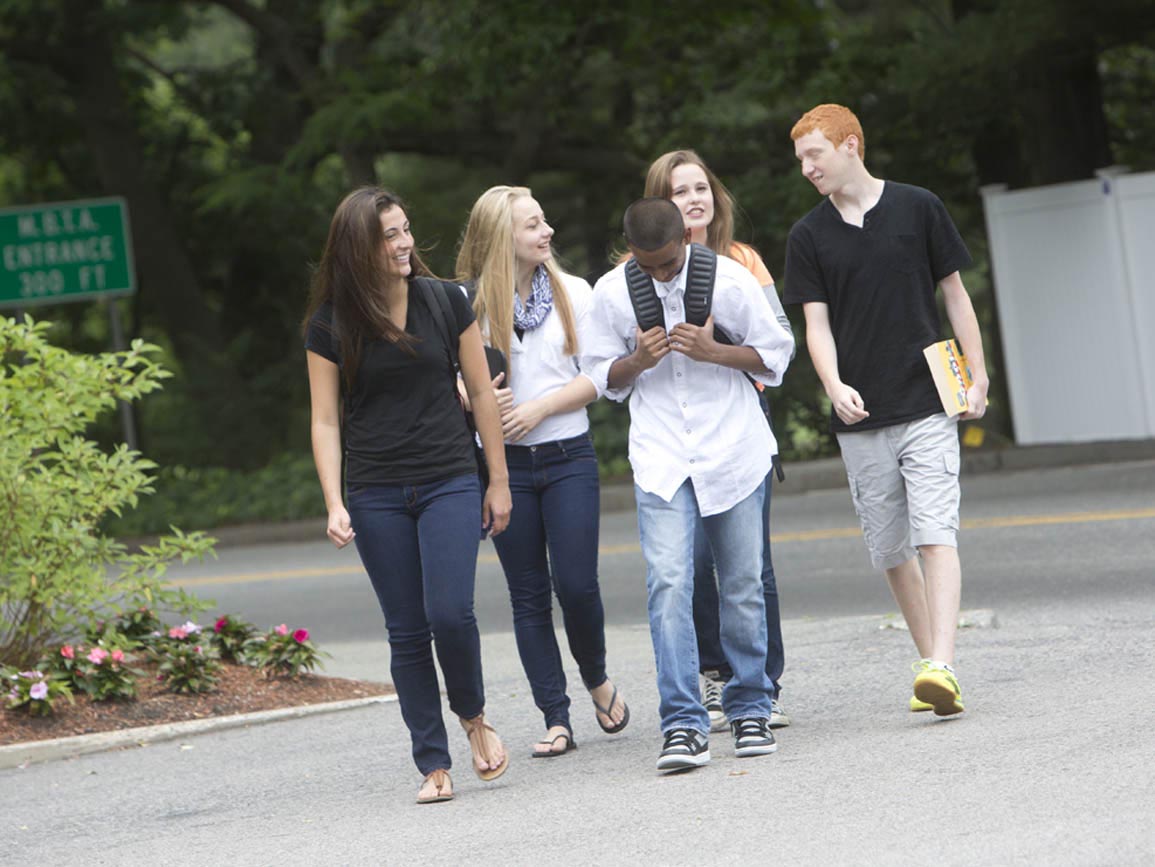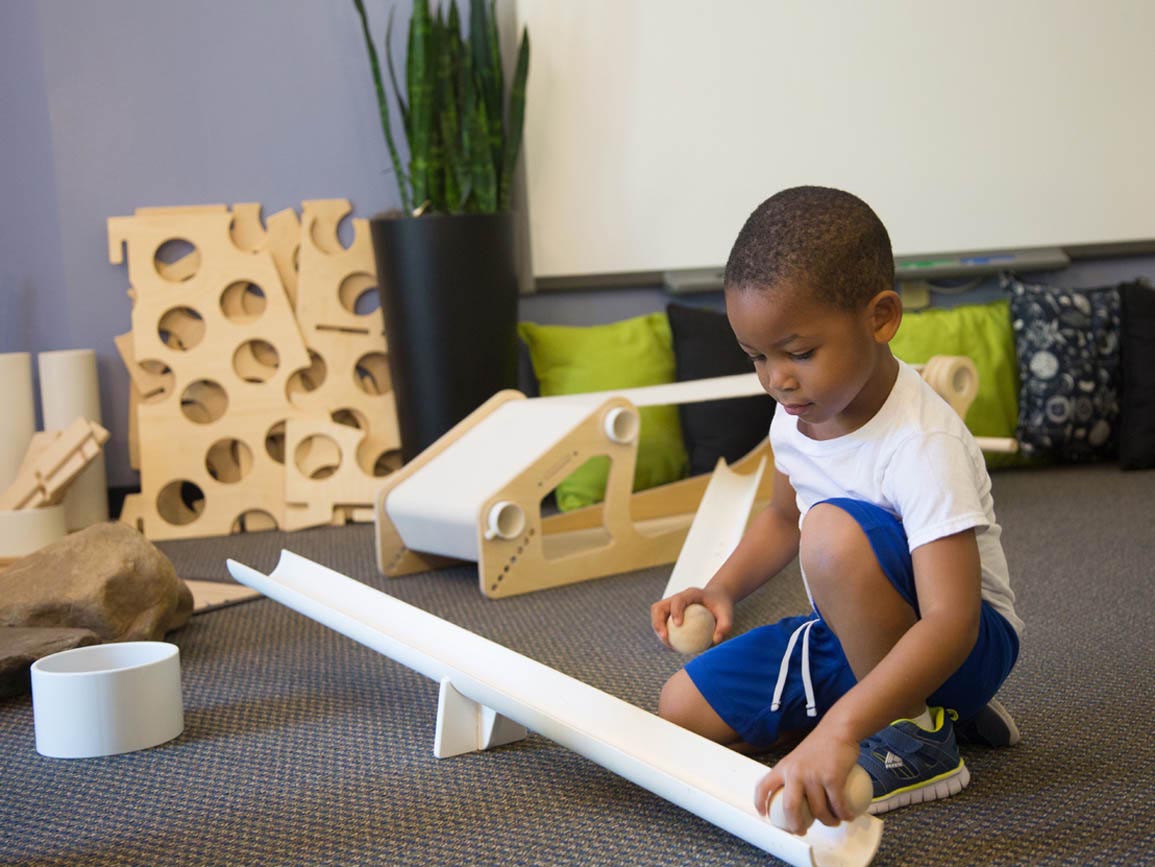Young children, especially infants and toddlers, explore the world through their senses — one of the reasons babies tend to put everything in their mouths. Maria Montessori believed that sensory experiences (those experiences that involve touch, sight, hearing, taste, or scent) were a critical and authentic part of childhood development. Modern research confirms her beliefs.
Through sensory experiences, children begin to notice patterns, similarities, and differences. They learn about cause and effect and gain the beginnings of problem solving. Many sensory experiences naturally encourage talking and sharing, which boosts language development. And perhaps most importantly, sensory experiences are soothing and pleasurable for young children.
Are you looking for educational activities to do at home with your kids that will encourage sensory development? Whether you have an infant, toddler, or preschooler, we have ideas for you. Take a look at these activities to get started.
Fun Sensory Development Learning Activities for Babies at Home
Follow the Light
Materials: flashlight
Hold your baby in your arms in a dark room and point out different objects with the flashlight. Is there a stuffed animal on the shelf? Shine the light on it and say, “I see your teddy bear!” Leave the flashlight on and shine it around the room to help your baby track the light with his eyes.
Repeat with Me
Materials: none
With a baby at home, you’re probably hearing babbles all day long. What are some of the most common sounds you hear? Look for sounds your child repeats often and find natural ways to repeat them to help your child build a foundation for language. Let’s take “ba,” for example. Simply repeat “ba, ba, ba” back to your child, pausing to allow her to respond in kind. This begins the give and take of a conversation. Other ideas include: sing “Bah, Bah, Black Sheep,” roll a ball around, point to different bottles in the kitchen, or emphasize the bye when saying “bye-bye.”
Sensory Bottles
Materials: empty clear plastic bottles, rice, beans, small stones, feathers, other small household items, masking tape
Fill each bottle with a different material and tape the cap on tightly. Supervise closely and help your baby roll, shake, and tap the bottles to explore the different sounds each material makes in the bottle.
What’s That Sound?
Materials: anything available that can generate a sound
Here’s an anytime, anywhere activity. Use available objects to make sounds — from tapping a pen on your water bottle to snapping your fingers. Say, “What’s making that sound? Is it my fingers?” and, “What sounds can you make?”
Mirror Play
Materials: mirror, your child’s toys
If you have a mirror that’s easy to move, set it up on a table or the floor. Sit in front of it with your child and give her toys to play with. First, see what she does and give her ample time to explore on her own. Then, join her play and talk about what you can see in the mirror.
Sensory Path
Materials: carpet square, throw rug, rubber mat, contact paper, bubble wrap, soft fabric, etc.
Put the materials on the floor and allow your baby to sit, crawl, or roll around on them. Talk about their textures and the sensations they create. Say, “The rug is rough on your hands,” “The bubble wrap pops when you crawl on it,” and “The fleece is smooth and warm.” Your baby’s sense of touch will develop and he’ll begin to make connections between words and feelings.
Fun Sensory Development Learning Activities for Toddlers at Home
Basket Full of Treasures
Materials: basket, fur, silk, velvet, fleece, burlap, linen, wool, etc.
Create a basket of materials with varying colors and textures. First, allow your child to explore the materials and see what she does. Then join her and talk about the objects — ask, “Which one is soft? Which one is rough?” And if she seems to like the fur, say, “You like the soft fur, don’t you? Do you want to see what it feels like on your arm?” Talk about attributes. Say, “The smooth silk is pink” and “Is the tan burlap scratchy?” Exploring different materials will help her learn to describe things and associate objects with words.
Painting the House
Materials: paint brush, large cup or bucket, water
Head outside with your toddler and show him how to “paint” the house, fence, sidewalk, driveway, and stairs with water. Boost his critical thinking skills — see whether the “paint” changes the color of the surface. Test whether location and temperature make a difference (sunny vs. shady and warm vs. cool). If it’s a hot day, watch the marks get lighter and lighter as the water dries up.
Treasures in a Bag
Materials: keys, cancelled credit cards, lipstick, small toys, a paint brush, old purse or tote bag
Collect small items (stay away from choking hazards) in an old purse or tote bag. Give the purse or bag to your child and have her open it and discover each “treasure.” Allow your child ample time to dump and fill, moving the objects in and out the bag. See what else he does. After he explores, join the fun and say things like, “Tell me what you can do with the keys,” “What can you do with the card?” and “How does that pink object feel on your hand? On your face?”
Moon Sand
Materials: 4 cups sand, 2 cups cornstarch, 1 cup water, bowl, smock or cover-up
This activity can get messy! Make sure to have your child cover up with a smock, apron, or old t-shirt before starting. Have your child use her hands to mix the sand and cornstarch in the bowl. Give her time to feel the two textures. Slowly pour the water in as she’s mixing and have her move the materials around until everything is combined. Ask, “What does it feel like?” Give her time to play with the moon sand and figure out what it can do.
Bath Time Fun
Materials: plastic watering cans, cups, beach toys
Bath time can be scary and intimidating for your toddler…are you looking for a way to make it more fun? Add toys into the mix! Your child can use a watering can, cups, and beach toys to play with the water and soapy suds. He can fill the toys up with water and pour it out — even on himself. This can be a great way to wash away soap and shampoo, too.
Fun Sensory Development Learning Activities for Preschoolers at Home
Art in a Can
Materials: empty can with lid (coffee, Pringles, or powdered formula can), paper, scissors, round object (golf ball, small wiffle ball, or marble)
Help your child fit the paper into the can so that it lines the inside (you may have to cut it). Then, drop some paint into the can, along with the round object. Put the lid on and seal it with tape. Ask your child, “How can you make the ball move inside the can?” Then, have him shake, roll, swirl, drop, and throw (softly and carefully) the can. When he’s done, open it up and take the paper out to see the designs!
Family Band Making Tambourines
Materials: paper plates, markers or paint, stapler, small objects (rice, beans, stones, or the like)
Do you have leftover paper plates from a birthday party or picnic? Use them to make tambourines! Have your child color, paint, or draw designs on the underside of two plates. Then, turn the plates over to face each other (designed sides facing out) and help your child start to staple them together. Once they’re almost attached, help your child put small objects inside (keep in mind that different materials make different sounds). Staple the plates closed, and then work together to make sounds, rhythms, and patterns. This will help you introduce both music and math concepts. Have everyone in the family make a tambourine, and then put on a concert or march in a parade together!
Exploding Milk Colors
Materials: pie plate, whole milk (about a cup, at room temperature), food coloring, liquid soap
Have your child pour the milk into the pie plate. Then, ask him to choose a bottle of food coloring and squeeze a few drops into the milk. Set the stage for scientific thinking by asking, “What do you think will happen when we add the soap?” Then, put one drop of liquid soap into the milk and watch the colors explode! Ask things like, “What happened to the colors?” and “Do you see any new colors?”
Beach in a Bottle
Materials: a trip to the beach/lake/creek, pail or bucket, plastic bottle, super glue, permanent marker, label
Explore the beach with your child and have her collect shells, small pieces of wood, pebbles, and rocks in a pail or bucket (try to stay away from perishable living plants). Say things like, “How many shells do we need?” and “Which items will fit in the bottle?” Then, head back to your towel or spot on the beach and sit down together. Have your child put the objects she found into the plastic bottle, along with sand and water. Once your child is done filling the bottle, seal the top with super glue (keep it out of your child’s reach until it’s dry). Use the label to add the location and date. Encourage your child to observe the items in the bottle and get an up-close look at them.
Washing Seashells
Materials: apron or play clothes, seashells, tub of sudsy water, scrub brush or old tooth brush, towel, sponge, paper, pen or marker
Your child might get wet while doing this activity, so help him put on an apron or play clothes before you get started. Set up a tub of sudsy water close to your child and give him a scrub brush and seashells. Then, clean the shells together and talk about all the different colors, shapes, and sizes. Once they’re all clean, work with your child to make a chart that shows their attributes and research their names at www.seashells.org.
Sensory development is important at every stage — and it can be fun! Try these learning activities for kids at home to help your little one explore his or her five senses.
More on Sensory Activities for Kids
- Gardening doesn't have to be expensive, complicated, or time-consuming. Here are six tips for teaching your kids how to garden.
- With summer in full swing, discover these ten water play activities that will keep your kids engaged and cooled off at the same time.
- Create tie-dye milk with ingredients you already have on hand — milk, food coloring, and dish soap. Learn how this simple activity can introduce STEM concepts at home!





